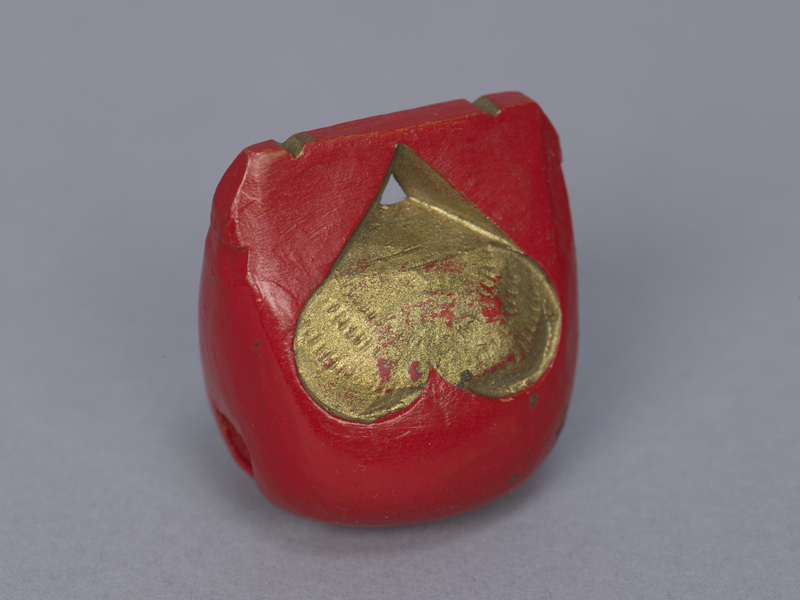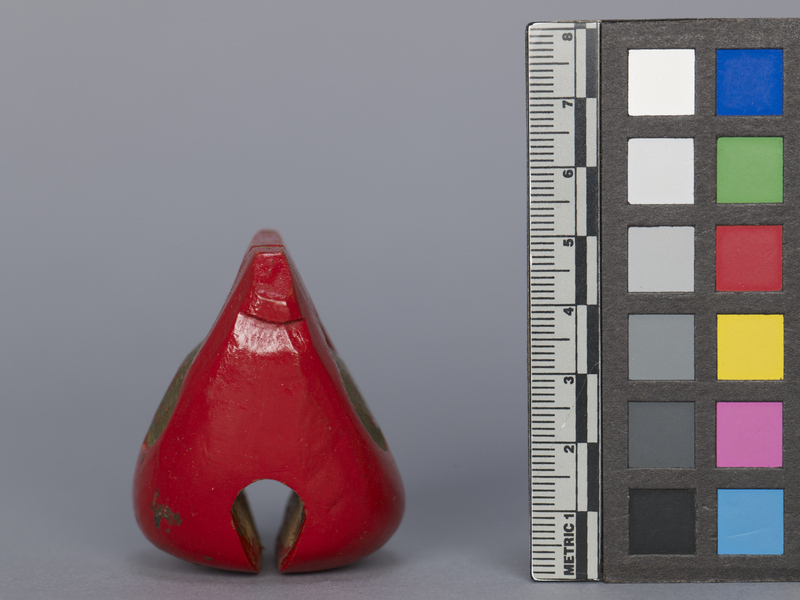Temple Block Item Number: 3110/17 from the MOA: University of British Columbia



Description
Small red "wooden fish" temple block. The inner bell is un-painted. The top edge has two small carved wedges painted gold and a small triangular shaped hole through the top, at the tip of a upside-down heart shaped carving. This decoration is on both sides, and painted the same gold as the wedges along the top edge.
History Of Use
This type of instrument is called a ‘wooden fish’ (in traditional Chinese, written as 木魚). It is also known as a Chinese temple block, and is a wooden percussion instrument used by monks and lay people in the Mahayana Buddhist tradition. It's often used during rituals involving the recitation of sutras, mantras, or other Buddhist texts.
Narrative
The items in the Chen Pu Yi collection (3110/1-27) belonged to the donor's grandmother, who passed away in 1983, at the age of 74. She was born in the Fujian province of China to a peasant family. Her father was an opium addict and was heavily in debt. She was sold into a well-off family in the city as a maid at 13. Soon after it was arranged that she would marry the younger son of that family. It was an unhappy union from the beginning as they shared little in common and, as an uneducated peasant girl, she was not considered to be a worthy life companion. Soon after the marriage his grandfather took on other mistresses and wives, and the relationship was marked by quarrels. Feeling trapped, and as a victim to circumstance, Chen Pu Yi resorted to a prayerful and contemplative life as a devout Buddhist. She could not read or write, but she was able to memorize by heart the scripts in the books. She recited them from cover to cover every morning for the rest of her life, as she prayed and meditated. She moved from China to Hong Kong after the war and later, with her eldest son, to Vancouver. She was a kind, gentle and generous person and in her quiet, simple way she endured and perservered. The donor felt her story to be typical of many women growing up in China at that time, and hoped the collection would help convey the story to younger generations.
Item History
What
Where
- Holding Institution
- MOA: University of British Columbia
- Made in
- China
When
- Ownership Date
- before April 28, 2015
- Acquisition Date
- on April 28, 2015
Other
- Condition
- good
- Accession Number
- 3110/0017